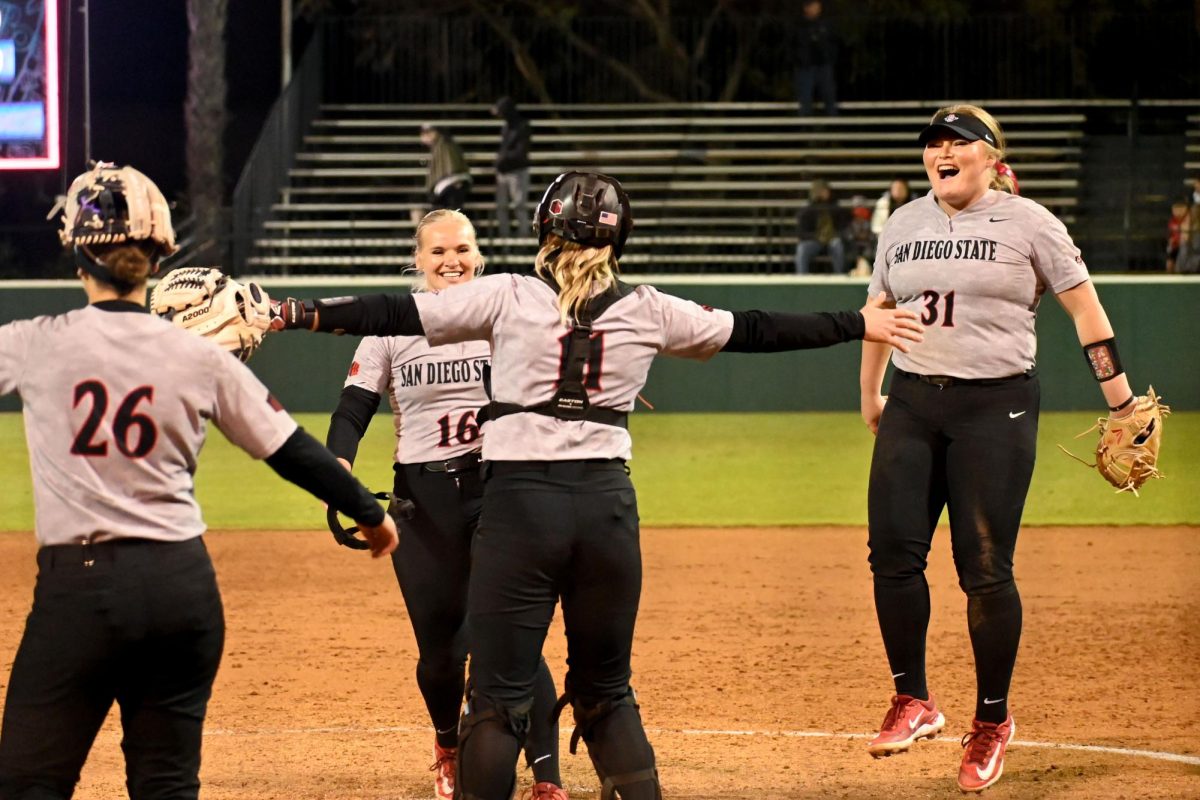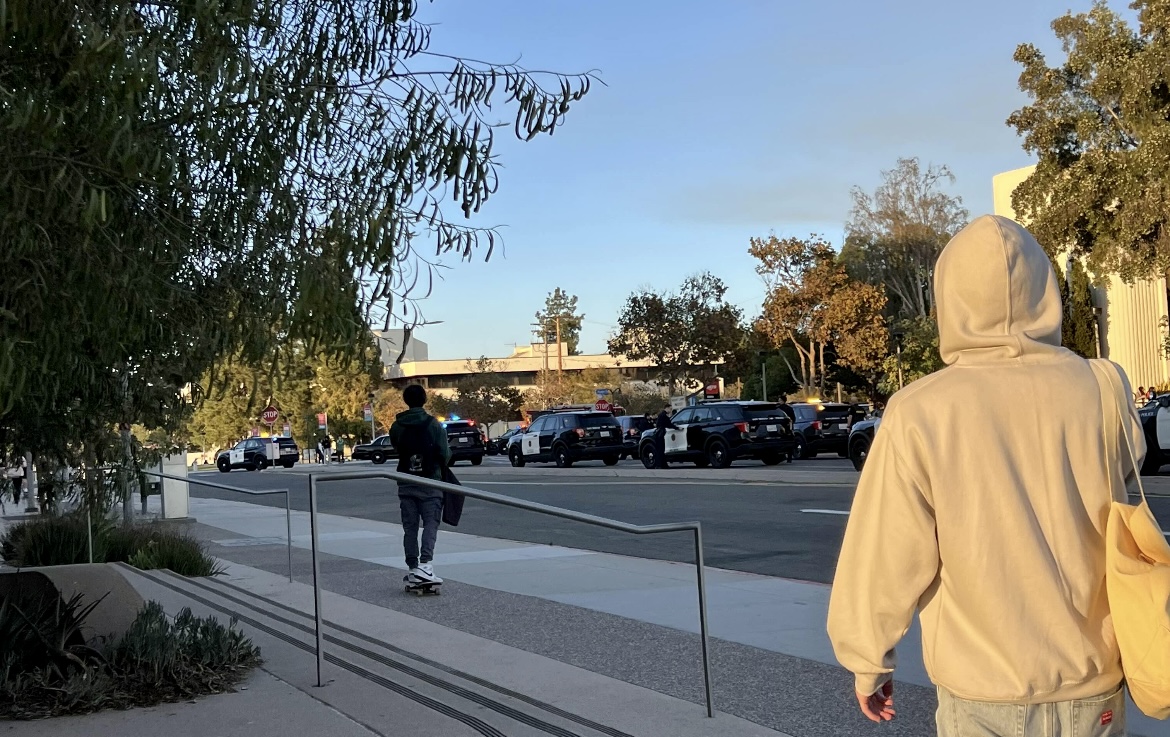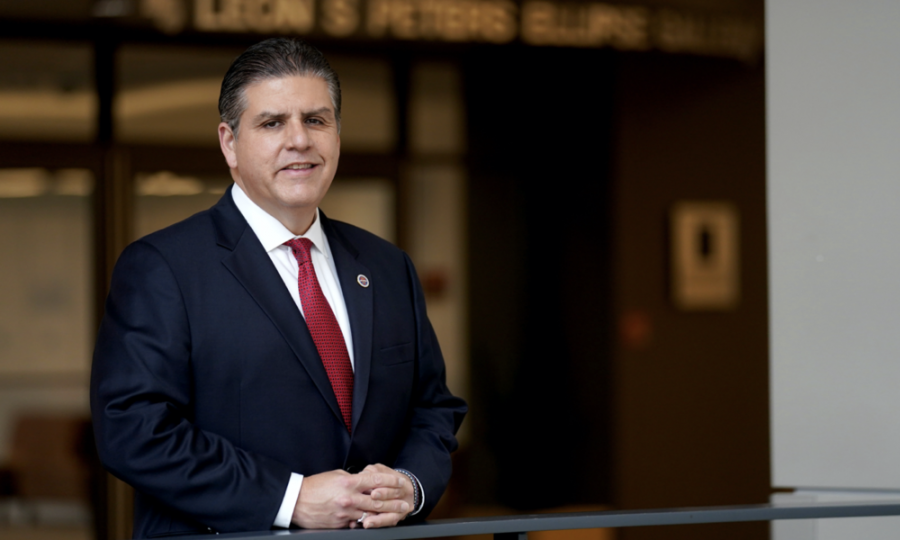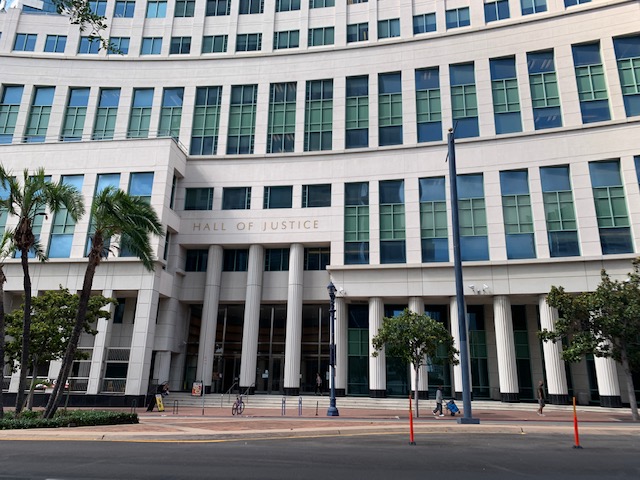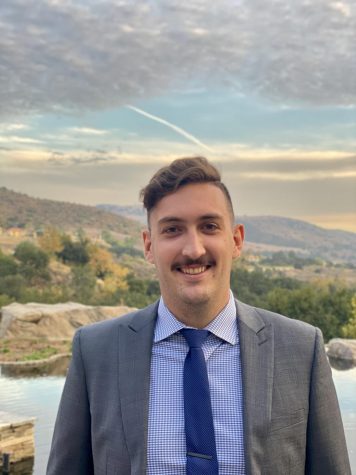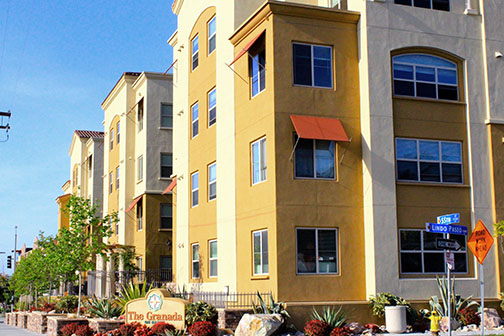
Students living in on-campus housing are anxious and uncertain as the COVID-19 outbreak at San Diego State continues to escalate.
As the community grapples with the severity of the rising case numbers, students living on campus are self-isolating and communicating in group chats with neighbors to track who might have symptoms.
Some students are even making preparations for the possibility of being sent home. Though the university has repeatedly reassured residents this will not be the case.
Ryan Harper, a freshman studying hospitality management was shocked that SDSU’s stay-at-home order, which ended Sept. 14, didn’t come sooner.
“I’m surprised that SDSU came out with the stay at home order now, kind of after everything happened,” Harper said. “I wish that they had taken the steps when they decided to move people on campus.”
Over Labor Day weekend Harper chose to self-isolate in her on-campus apartment as she waited for her test results. Harper said she knows multiple individuals in her building that have tested positive for the coronavirus and are showing symptoms, yet have still not been relocated to one of the university’s 130 isolation spaces.
NBC7 reported similar stories of students who tested positive experiencing delays before being moved into isolation housing and a lack of information provided by the school.
“It is inaccurate to state that students are receiving little to no information about isolation and quarantine,” the SDSU said in a statement. “To ensure that students have clear direction and assistance, SDSU has designated a team of professionals who are each assigned individual students. Further, the university directly sent information and guidance via email about how students who are in isolation and quarantine must remain so, following the guidance of medical providers.”
The statement continued, “It is also important to understand that many of the communications, outside of all-campus emails, COVID-19 website updates and SDSU social media posts, are occurring one-on-one with individual students. In the era of social media, the assumption sometimes is that if it is not on social media, it is not happening, and that is simply not the case.”
SDSU Housing Director, Cynthia Cervantes said students in isolation are receiving support from the university.
“As soon as housing is made aware of a positive case the transition process starts,” Cervantes said.
When a student is transitioned into isolation housing a case manager is assigned and conducts check-ins with students twice a day. Food and meals are delivered and managed by SDSU Catering.
As of Sept. 14, 62 students were in isolation and 156 students were quarantined in their on-campus residences, though information about where these students live was not provided.
However, residents are using group chats to figure that out for themselves.
Harper said she’s been communicating with students who live in her complex and said the consensus among her neighbors is that the building she lives in, Building B, has the most COVID-19 cases in the Villa Alvarado apartment complex.
“I’m in a bunch of group chats with kids in the whole Villa Alvarado complex, and when talking about it, it’s clear that building B has the most cases,” Harper said.
Due to privacy concerns, SDSU does not provide specific data on where students who test positive reside so The Daily Aztec was unable to confirm this.
Despite the rising presence of cases in her building, according to other residents in a group chat, Harper said school leaders have not required testing for her building or for the Villa Alvarado complex.
On Sept. 15, SDSU announced that all students living in university housing will be required to get tested for COVID-19 and that a surveillance testing program would be implemented.
Before this, Harper and others decided to get tested because they have been in contact with people who are currently experiencing symptoms.
However, students living at the center of SDSU’s coronavirus problem are still trying to make sense of all of the breaking news. The fear of contracting the virus is compounded with the possibility of going home, losing connections they have made and not receiving the in-person education they came for.
“I’m more anxious about what it means for housing,” Ben Peterson, a freshman studying journalism, said. “I know they’re saying, ‘oh housing’s fine,’ but I don’t know about that. I stay in a dorm, and I would like to continue staying in a dorm.”
At a press conference on Sept. 3 university administrators said that on-campus housing resources would continue to be available to all student residents, and in a press conference on Sept. 15 Vice President of Student Affairs J. Luke Wood said SDSU has no plans to close the dorms.
“Our students are welcome to stay, and we encourage that students currently in residence remain in campus housing to help avoid community spread,” SDSU President Adela de la Torre wrote to students in an email.
While the university will keep residence halls open, students can opt-out of their contracts. As of Sept. 8, students could cancel their on-campus housing contracts without financial penalty.
Cervantes said this change was made in order to give students the most flexibility.
However, while residents can choose to move out, student staff members who serve as residential advisors, academic mentors and community assistants in Residential Education do not have that same option since many rely on the housing their jobs provide.
Several have voiced concerns on social media about a lack of communication and support from the university.
On Sept. 8 SDSU Residential Education held a meeting with its entire staff. According to one staff member, Mark-Yves Gaunin who is an academic mentor in South Campus Plaza South, housing kept making excuses.
“(Residential Education) made the meeting a seminar on Zoom, so we couldn’t talk to Kara Bauer or anyone,” Gaunin said. “They gave us an opportunity to ask questions before the meeting in a Google Form but we couldn’t actively participate in the conversation and they were just talking to us and making excuses.”
Before the meeting took place, Guanin had posted an extensive thread on Twitter calling out the university. The thread has been retweeted over 28,000 times and Guanin has continued to add information he has received from other concerned staff members who have messaged him directly.
One incident the thread points out was a night when RAs on duty delivered meals to students in isolation, something Kara Bauer, director of residential education at SDSU said should never have happened, and won’t happen again.
Bauer and Cervantes also stressed that students should turn towards trusted sources of information, not necessarily social media, for the most recent updates.
“We need to make sure we are pointing students towards accurate sources of information,” Cervantes said.
Bauer urged students to come to university leaders with their concerns.
“Residential Education has an open door, open department policy,” Bauer said. “If students have concerns they are encouraged to come talk to us.”
SDSU Housing and Residential Education keep an updated web page dedicated to COVID-19. SDSU also maintains its own coronavirus site with the latest information, and for the last several weeks residents and staff members have received almost daily emails from SDSU about COVID-19 on campus. This is overwhelming, students and staff say and making many worry about what the next day will bring.
Peterson, who is from Philadelphia, is weighing the economics of possible housing options.
“I’m personally looking for an apartment nearby,” he said. “But if I had to move back home, it would be difficult”
For so many students, moving home means plane tickets and thousands of miles. In addition to potentially losing connections to friends that are going through the same unprecedented experience.
“If I move, I think it would be incredibly hard to stay connected to the friends that I’ve made here. That’s a big one for me,” Peterson said.
Students living and working in university housing are concerned about their overall emotional and mental health as well.
Harper said moving back home to Seattle wouldn’t be easy.
“I’ve created such a system for myself, I’ve created this whole routine, centered around living here. It would be damaging for my mental health,” Harper said.
Guanin says the entire situation is concerning and frustrating for staff just trying to do their jobs.
“A lot of us are frustrated by this whole situation,” Guanin said. “Our jobs right now just don’t feel right.”






